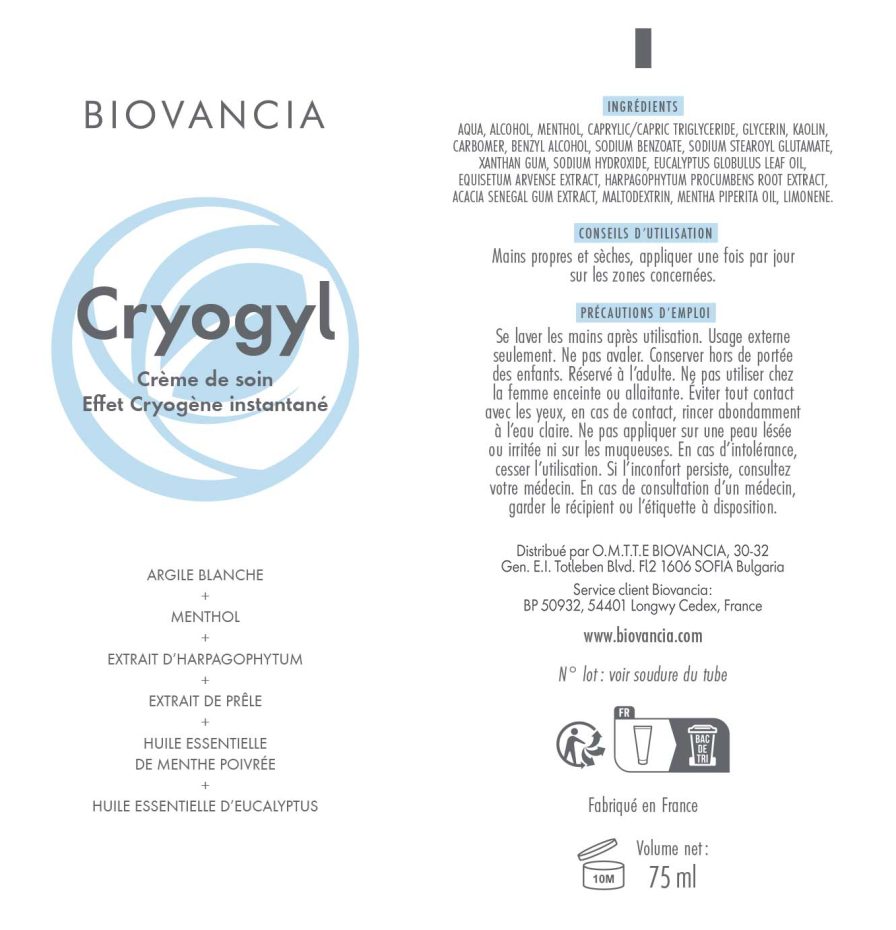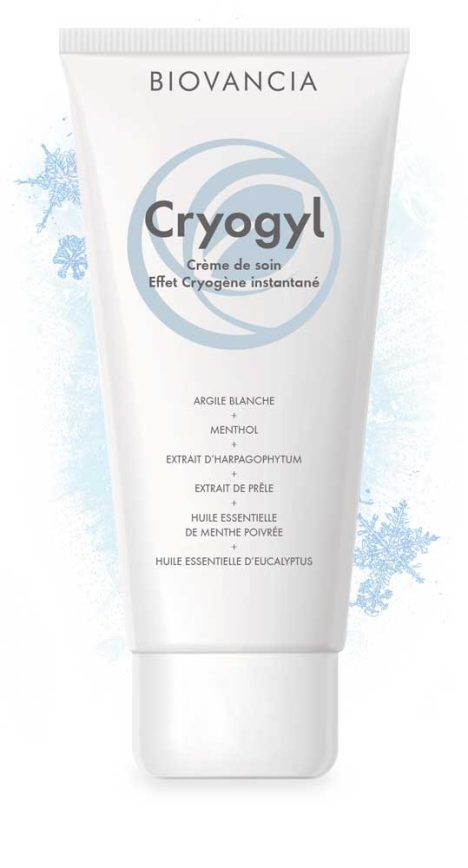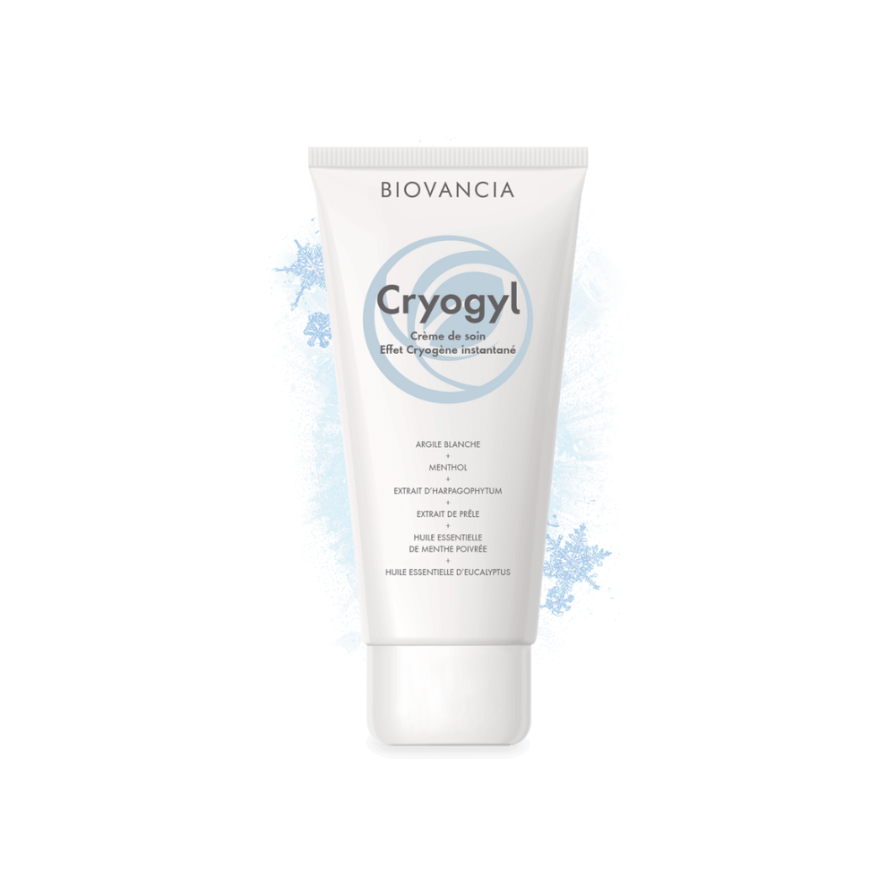Ce site web utilise des cookies afin de vous offrir la meilleure expérience utilisateur possible. Les informations sur les cookies sont stockées dans votre navigateur et remplissent des fonctions telles que la reconnaissance de votre retour sur notre site et l'aide à notre équipe pour comprendre quelles sections du site vous trouvez les plus intéressantes et utiles.
Cryogyl
Une crème effet cryogène instantané qui soulage les douleurs musculaires et articulaires.
Cryogyl est une crème à effet froid immédiat associant 6 actifs qui apaisent les muscles et les articulations sensibles : le menthol, l’argile blanche, l’eucalyptus, la prêle, l’harpagophytum et la menthe poivrée.
Conseils d’utilisation : Mains propres et sèches, appliquer une fois par jour sur les zones concernées. Se laver soigneusement les mains après utilisation.
Recommandations : Réservé à l’adulte. Ne pas utiliser chez la femme enceinte ou allaitante. Ne pas appliquer sur une peau lésée ou irritée.
 En stock – expédié sous 24h
En stock – expédié sous 24h
69€ (livraison offerte)

choisissez votre offre
-



-

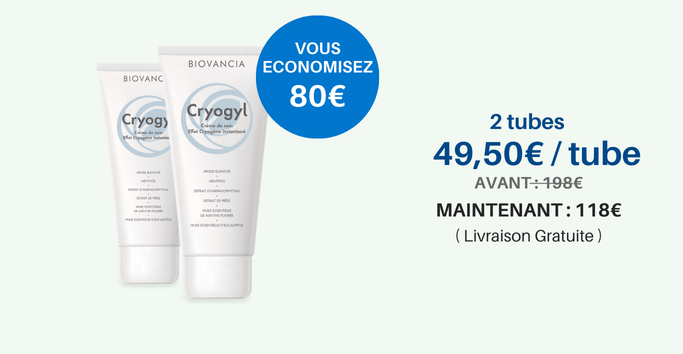

-

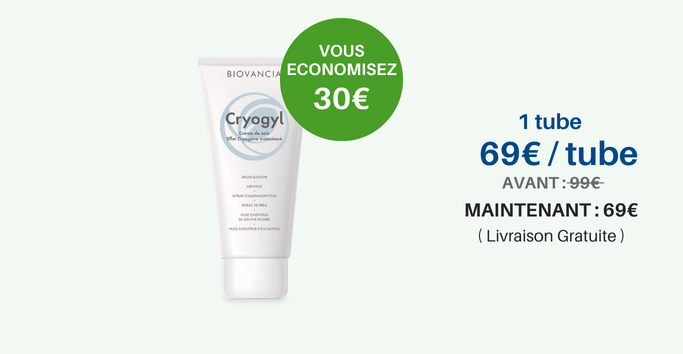

-
1 boite SANS abonnement : 99€ Cliquez ici

Cryogyl combine 6 actifs d’origine naturelle dans une crème de massage à effet froid instantané pour un soulagement rapide des zones sensibles
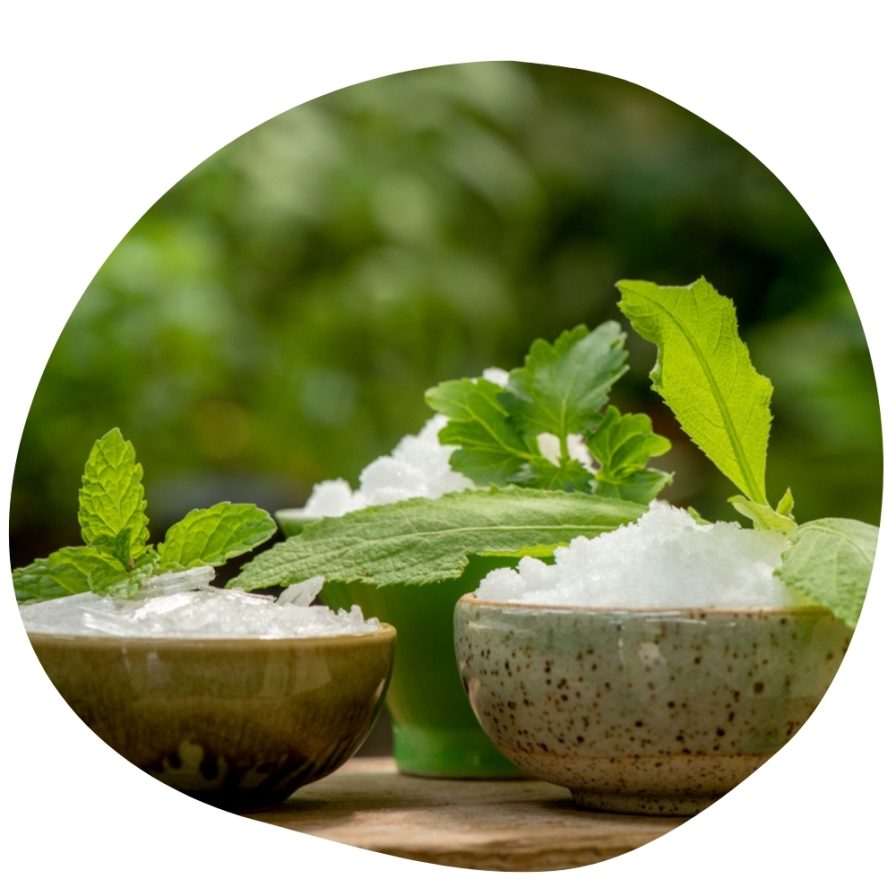
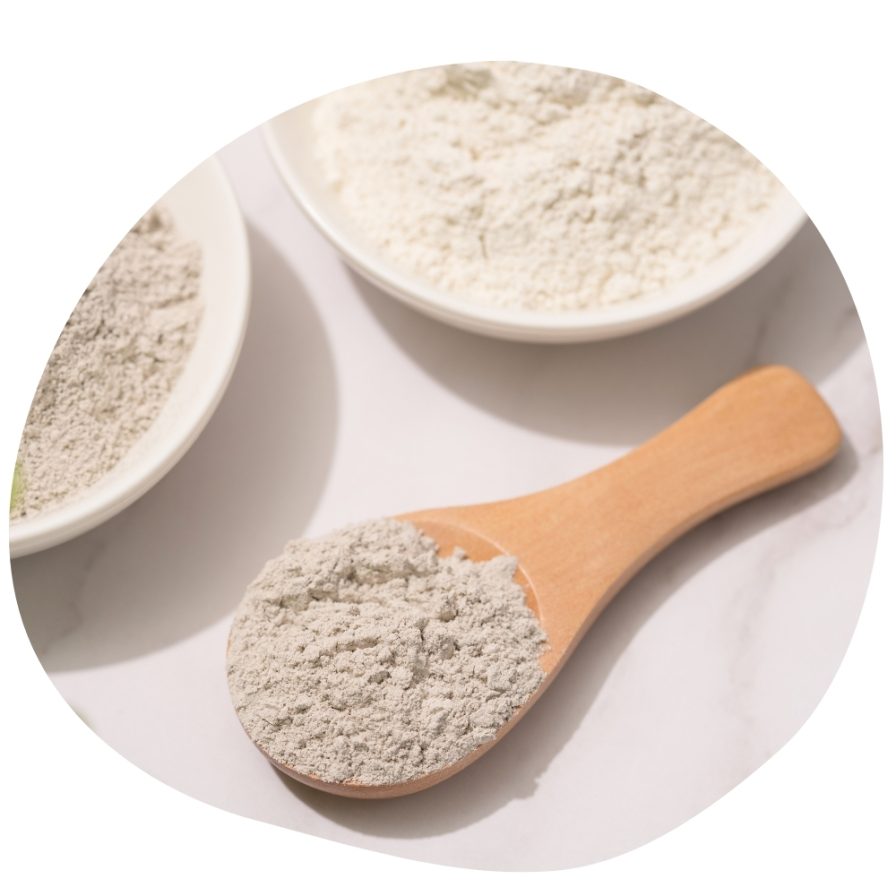
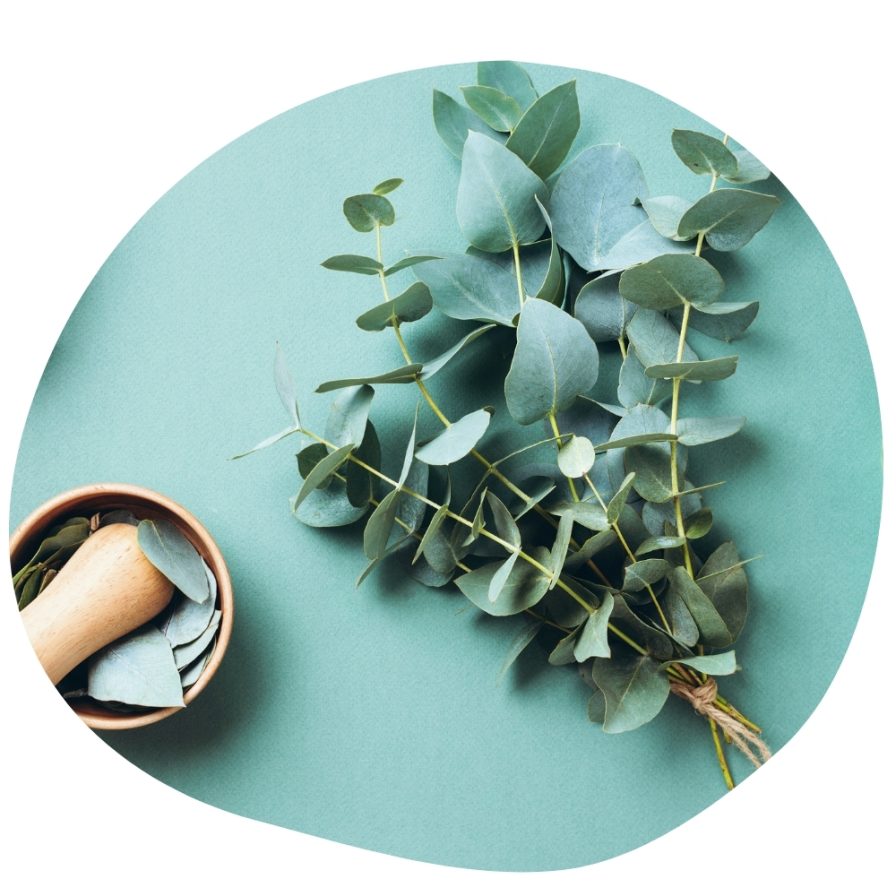
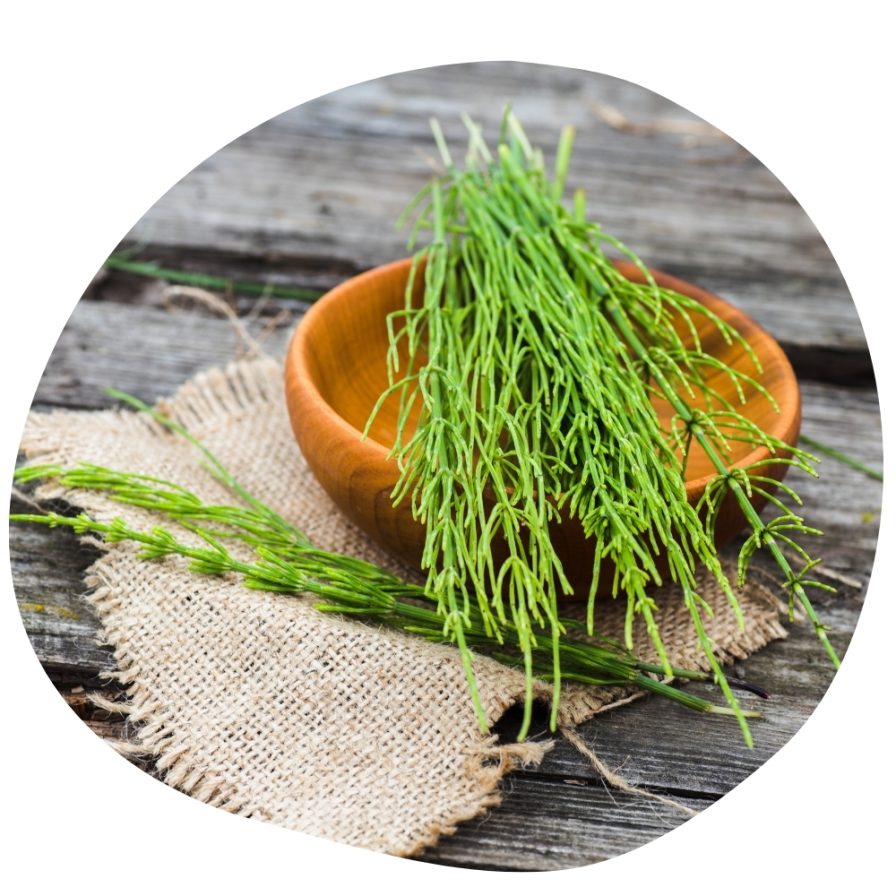
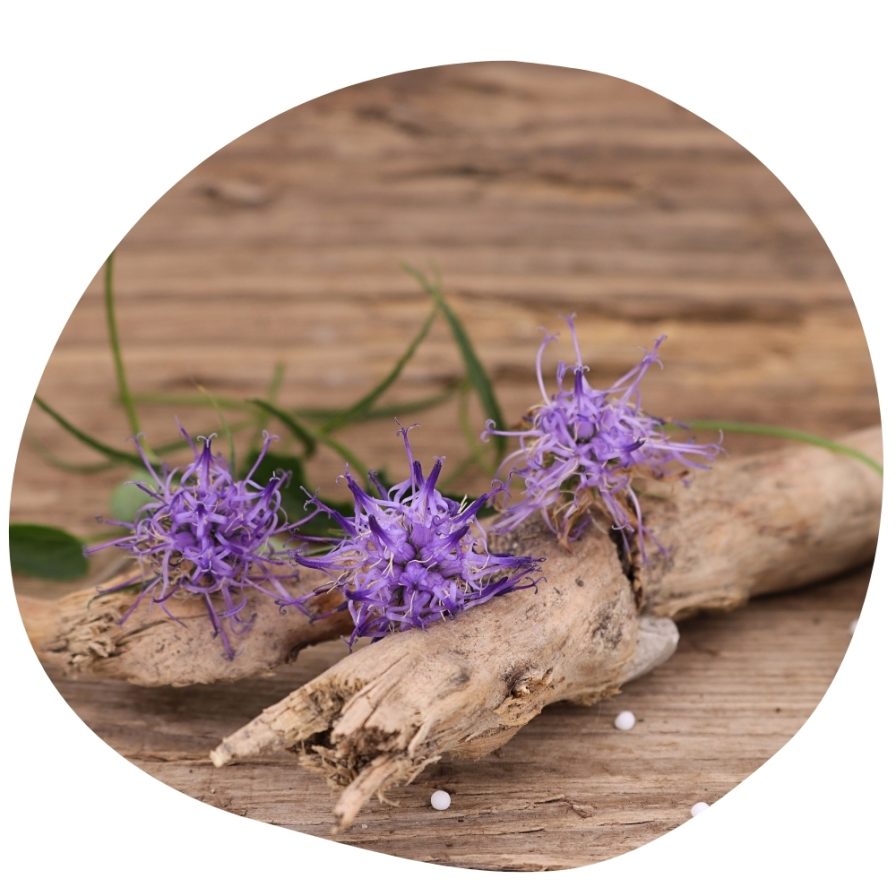
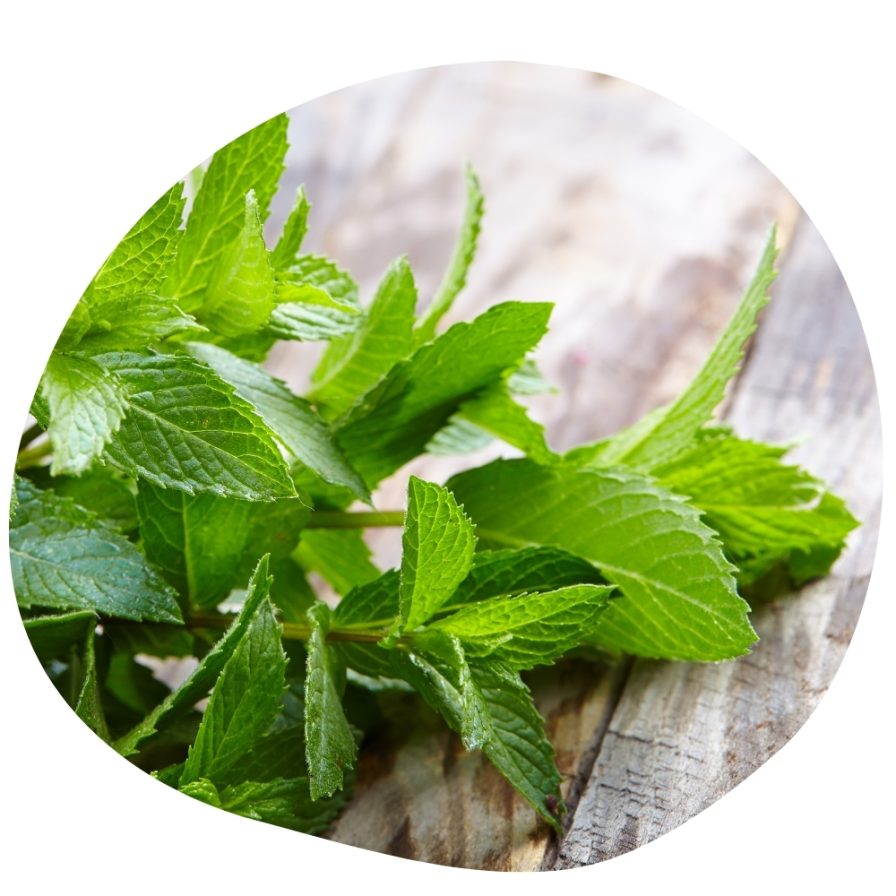
Actif n°6 : Menthe poivrée
Cultivée en Angleterre à partir du XVIIe siècle, la menthe poivrée (Mentha piperita) ou « peppermint » en anglais, est une plante herbacée aux effluves particulièrement agréables, frais et pénétrants.
Cette odeur intense est due aux deux principaux actifs de la plante, le menthol et la menthone, qui apportent un effet coup de fouet en cuisine dans les plats, thés et infusions, en inhalation ou localement après distillation de ses feuilles.
Appliquée sur la peau, l’huile essentielle de menthe poivrée, riche en menthol, provoque une sensation de froid immédiate(8) qui permet d’inhiber le rôle des récepteurs de la douleur, qu’elle soit d’origine musculaire, articulaire ou tendino-ligamentaire.
Sources :
(1) Kamatou, G., Vermaak, I., Viljoen, A., & Lawrence, B. M. (2013). Menthol : a simple monoterpene with remarkable biological properties. Phytochemistry, 96, 1525. https://doi.org/10.1016/j.phytochem.2013.08.005
(2) Menthol–Pharmacology of an important naturally medicinal « cool » . (2013, 1 janvier). PubMed. https://pubmed.ncbi.nlm.nih.gov/23061635/
Pergolizzi, J. V., Taylor, R., LeQuang, J. A., & Raffa, R. B. (2018). The role and mechanism of action of menthol in topical analgesic products. Journal of Clinical Pharmacy and Therapeutics, 43(3), 313319. https://doi.org/10.1111/jcpt.12679
(3) Awad, M. E., López-Galindo, A., Setti, M., El-Rahmany, M. M., & Iborra, C. V. (2017). Kaolinite in Pharmaceutics and Biomedicine. International Journal of Pharmaceutics, 533(1), 3448. https://doi.org/10.1016/j.ijpharm.2017.09.056
(4) Yin, C., Liu, B., Wang, P., Li, X., Li, Y., Zheng, X., Tai, Y., & Wang, C. (2020). Eucalyptol alleviates inflammation and pain responses in a mouse model of gout arthritis. British Journal of Pharmacology, 177(9), 20422057. https://doi.org/10.1111/bph.14967
Silva, J., Abebe, W., De Sousa, S. M. C., Duarte, V., Machado, M. I. L., & Matos, F. J. A. (2003). Analgesic and anti-inflammatory effects of essential oils of eucalyptus. Journal of Ethnopharmacology, 89(23), 277283. https://doi.org/10.1016/j.jep.2003.09.007
(5) Treatment of the common cold. (2019, 1 septembre). PubMed. https://pubmed.ncbi.nlm.nih.gov/31478634/
(6) Monte, F. H. D., Santos, J., Russi, M., Lanziotti, V. M. N. B., Leal, L. K. A. M., & De Andrade, G. M. (2004). Antinociceptive and anti-inflammatory properties of the hydroalcoholic extract of stems from Equisetum arvense L. in mice. Pharmacological Research, 49(3), 239243. https://doi.org/10.1016/j.phrs.2003.10.002
(7) Mncwangi, N., Chen, W., Vermaak, I., Viljoen, A., & Gericke, N. (2012). Devil’s Claw—A review of the ethnobotany, phytochemistry and biological activity of Harpagophytum procumbens. Journal of Ethnopharmacology, 143(3), 755771. https://doi.org/10.1016/j.jep.2012.08.013
Grant, L., McBean, D. E., Fyfe, L., & Warnock, A. M. (2007). A review of the biological and potential therapeutic actions of Harpagophytum procumbens. Phytotherapy Research, 21(3), 199209. https://doi.org/10.1002/ptr.2029
Gagnier, J., Chrubasik, S., & Manheimer, E. (2004). Harpgophytum procumbens for osteoarthritis and low back pain : a systematic review. BMC Complementary and Alternative Medicine, 4(1). https://doi.org/10.1186/1472-6882-4-13
Mariano, A., Bigioni, I., Mattioli, R., Di Sotto, A., Leopizzi, M., Garzoli, S., Mariani, P. F., Vedova, P. D., Ammendola, S., & d’Abusco, A. S. (2022). Harpagophytum procumbens root extract mediates Anti-Inflammatory effects in osteoarthritis synoviocytes through CB2 activation. Pharmaceuticals, 15(4), 457. https://doi.org/10.3390/ph15040457
Gxaba, N., & Manganyi, M. C. (2022). The fight against infection and pain : Devil’s Claw (Harpagophytum procumbens) a rich source of Anti-Inflammatory activity : 2011–2022. Molecules, 27(11), 3637. https://doi.org/10.3390/molecules27113637
Mahomed, I. M., & Ojewole, J. A. O. (2004). Analgesic, antiinflammatory and antidiabetic properties of Harpagophytum procumbens DC (Pedaliaceae) secondary root aqueous extract. Phytotherapy Research, 18(12), 982989. https://doi.org/10.1002/ptr.1593
(8) Kamatou, G., Vermaak, I., Viljoen, A., & Lawrence, B. M. (2013b). Menthol : a simple monoterpene with remarkable biological properties. Phytochemistry, 96, 1525. https://doi.org/10.1016/j.phytochem.2013.08.005
Mohammadifar, M., Aarabi, M. H., Aghighi, F., Kazemi, M., Vakili, Z., Memarzadeh, M. R., & Talaei, S. A. (2021). Anti-osteoarthritis potential of peppermint and rosemary essential oils in a nanoemulsion form : behavioral, biochemical, and histopathological evidence. BMC Complementary Medicine and Therapies, 21(1). https://doi.org/10.1186/s12906-021-03236-y

